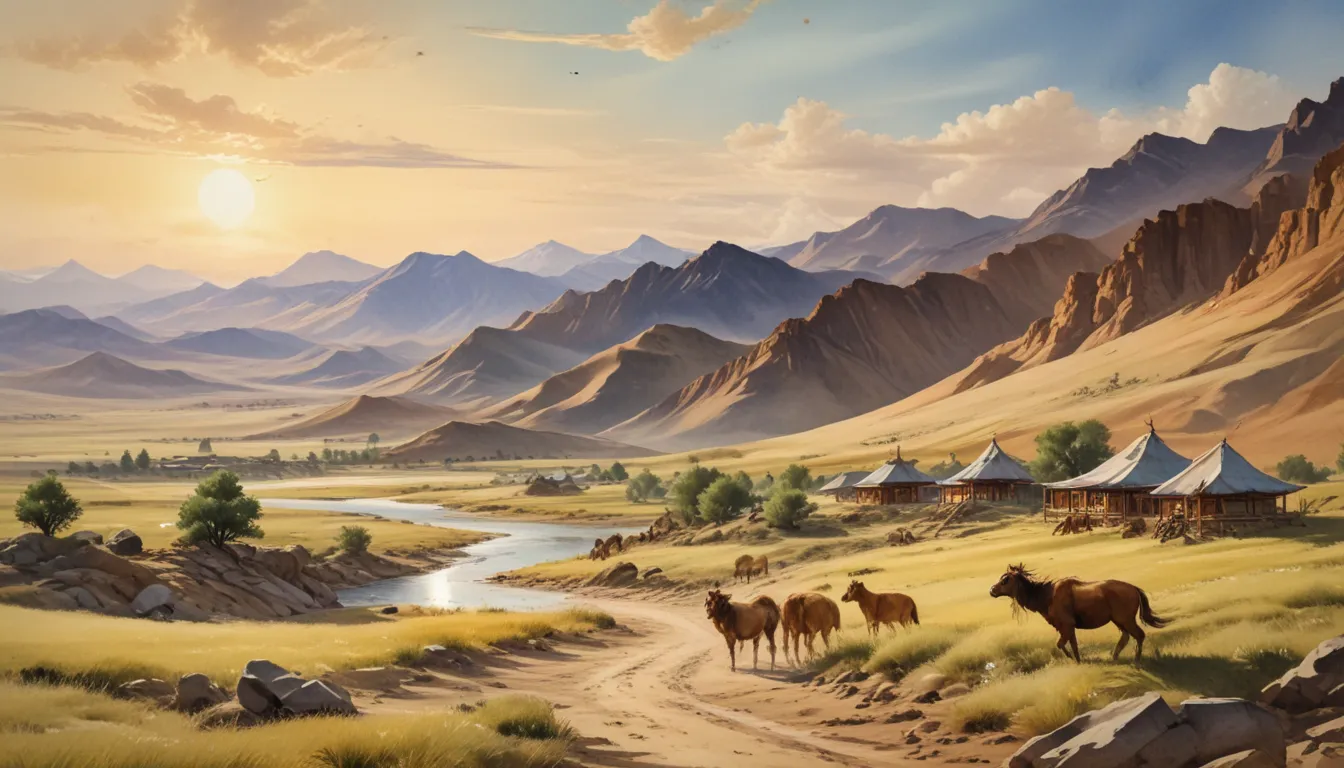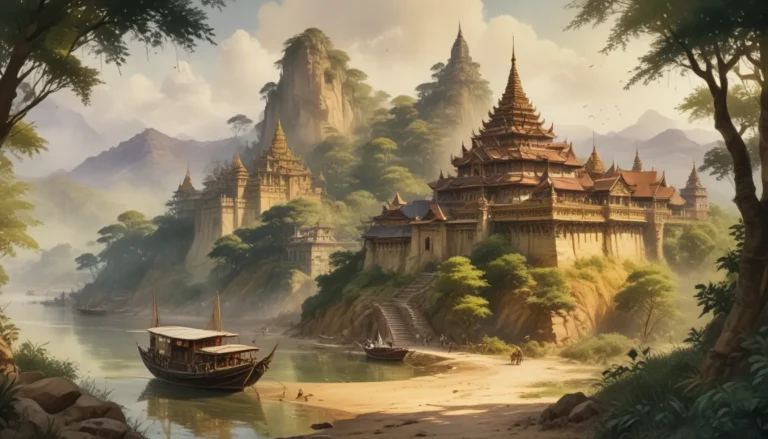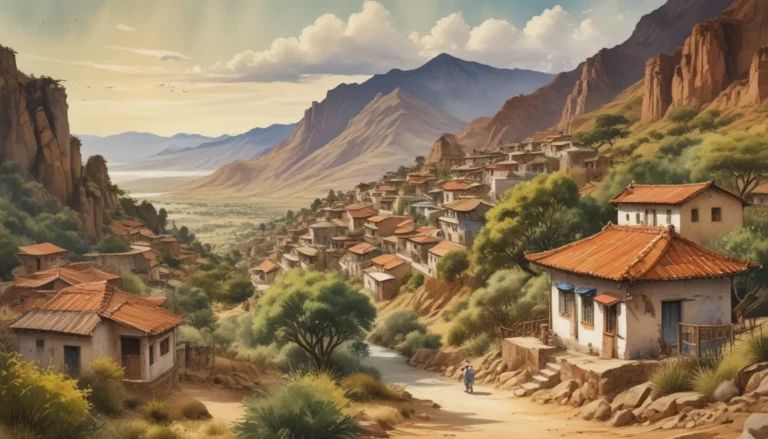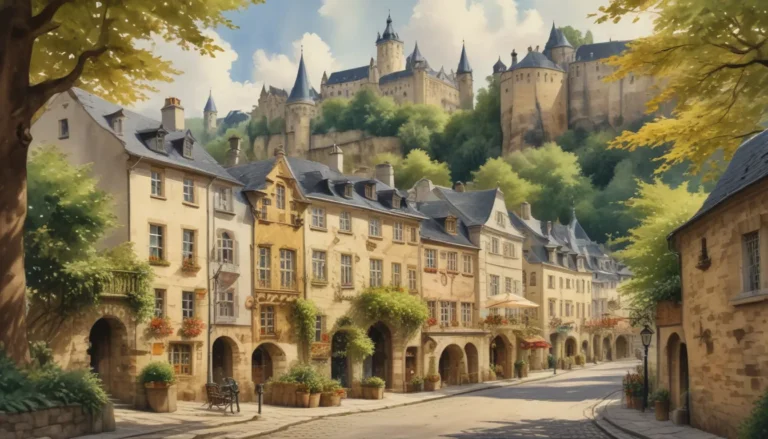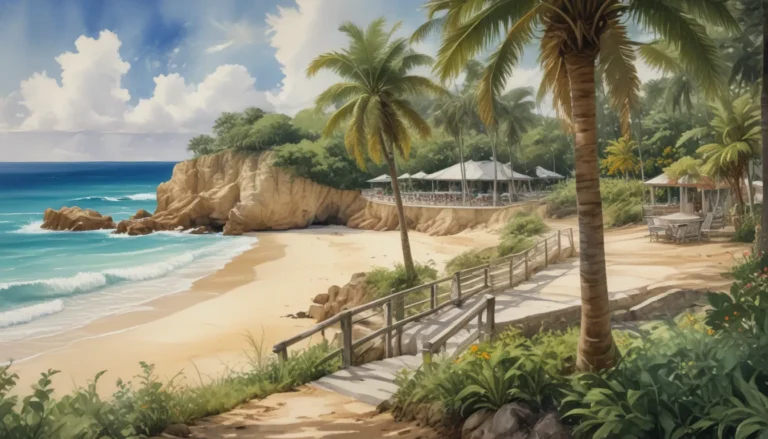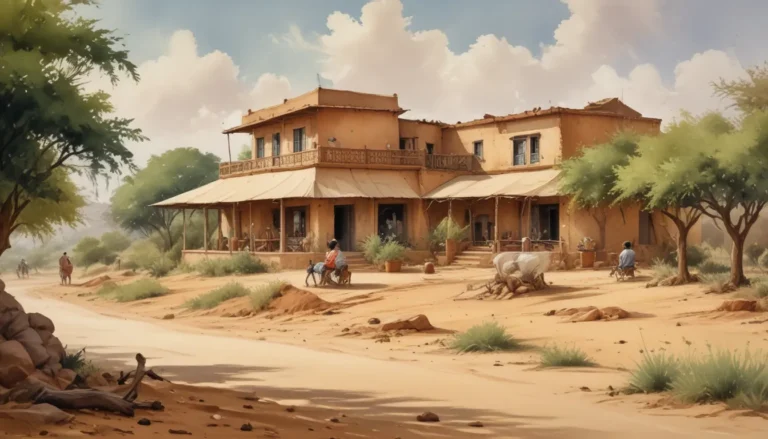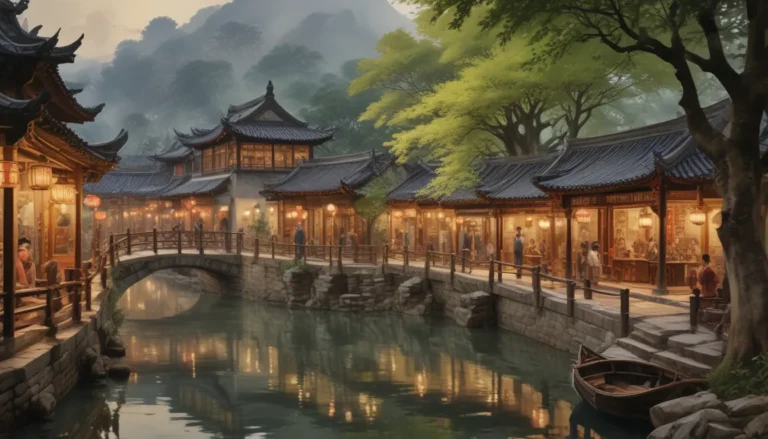The images in our articles are for illustrative purposes only and may not exactly match the content. They are intended to capture your interest and complement the text, not to replace it.
Welcome to the enchanting world of Mongolia, a landlocked country in East Asia renowned for its vast landscapes, rich history, and unique nomadic traditions. With a population of over 3 million people, Mongolia offers a blend of ancient traditions and modern developments that create a captivating tapestry of past and present. Join us as we explore 42 fascinating facts about Mongolia that showcase its history, culture, natural wonders, and more.
Unveiling Mongolia: The Land of the Eternal Blue Sky
Mongolia, often called the “Land of the Eternal Blue Sky,” boasts over 250 sunny days each year, making it a paradise for outdoor enthusiasts and nature lovers. The clear and sunny weather adds to the country’s allure, providing a backdrop of perfect blue skies for explorers and adventurers.
Immersing in Nomadic Traditions
Rich with nomadic heritage, around 35% of Mongolia’s population still follows a semi-nomadic or nomadic way of life. Herding livestock and moving their homes, known as gers or yurts, across the vast plains, the Mongolian people maintain a connection to their ancestral traditions that is both fascinating and admirable.
Exploring the Legacy of Genghis Khan
Mongolia takes pride in being the birthplace of Genghis Khan, the legendary warrior and founder of the Mongol Empire. Under his leadership, the Mongols created the largest contiguous empire in history, spanning from Asia to Europe. The influence of Genghis Khan’s reign can still be felt throughout Mongolia’s history and culture.
Roaming the Vast Mongolian Landscape
Spanning an area of 1.6 million square kilometers, Mongolia is the world’s second-largest landlocked country. Bordered by Russia to the north and China to the south, east, and west, Mongolia’s expansive terrain offers a sense of tranquility and untouched wilderness for those seeking adventure and exploration.
Diving into the Diversity of the Gobi Desert
As home to the vast and captivating Gobi Desert, Mongolia offers a unique landscape that supports a diverse range of flora and fauna. Despite its arid conditions, the Gobi Desert is a thriving ecosystem, hosting species like the elusive and endangered snow leopard, adding to the country’s rich biological diversity.
Celebrating Tradition at the Naadam Festival
The Naadam Festival stands as Mongolia’s most significant and celebrated event, showcasing the “Three Manly Games” of wrestling, horse racing, and archery. Rooted in Mongolian culture and tradition, the festival is a vibrant display of sportsmanship, skill, and cultural pride that mesmerizes visitors and locals alike.
Embracing the Spirit of the Mongolian Horse
Renowned for their strength and endurance, Mongolian horses have played a pivotal role in the country’s history and nomadic lifestyle. From withstanding harsh climatic conditions to showcasing agility and resilience, the Mongolian horse is a symbol of the country’s enduring spirit and heritage.
Witnessing the Mesmerizing Throat Singing Tradition
Mongolia is known for its unique form of singing called throat singing or khoomii. This captivating technique allows singers to emit multiple tones simultaneously, creating a haunting and magical melody that enchants listeners and showcases the country’s rich musical heritage.
Exploring the Enigmatic Flaming Cliffs
The Flaming Cliffs, also known as Bayanzag in the Gobi Desert, are a renowned landmark featuring striking red sandstone formations. Considered one of the world’s most important paleontological sites, the Flaming Cliffs have yielded numerous dinosaur fossils, offering a glimpse into Mongolia’s prehistoric past.
Unraveling the History of the Mongolian Empire’s Postal System
In the 13th century, Genghis Khan implemented an efficient postal system known as the “Yam” as part of the Mongolian Empire’s military and administrative strategies. This system enabled swift message relay across vast distances, showcasing the empire’s organizational prowess and strategic innovations.
Delving into Mongolia’s Abundant Mineral Resources
Mongolia’s rich mineral resources, including coal, copper, gold, and uranium, play a crucial role in the country’s economy. Drawing international investment and driving economic growth, the mining industry in Mongolia continues to be a significant contributor to the country’s development and prosperity.
Embracing the Wilderness of the Mongolian Steppe
The Mongolian steppe, a vast grassland covering a significant portion of the country, is a haven for diverse wildlife and offers a picturesque landscape of rolling hills and expansive plains. Home to species like antelopes, gazelles, and wild horses, the Mongolian steppe invites visitors to immerse themselves in nature’s beauty and tranquility.
Discovering the Influence of Buddhism
Buddhism has deeply influenced Mongolian culture and spirituality, with the country being home to numerous monasteries and temples. Practiced by a significant portion of the population, Buddhism in Mongolia reflects a blend of tradition, faith, and reverence for the natural world.
Savoring the Flavors of Traditional Mongolian Cuisine
Mongolian cuisine, shaped by the nomadic lifestyle and local ingredients, offers a unique culinary experience. From khorkhog (meat cooked with hot stones) to buuz (steamed dumplings) and airag (fermented horse milk), traditional Mongolian dishes celebrate the country’s heritage and flavors.
Experiencing the Art of Throat Bow Archery
Mongolian archery, a revered sport and integral part of the country’s culture, features the traditional Mongolian bow known as the throat bow. With a unique design and historical significance, the throat bow showcases the craftsmanship, skill, and tradition of Mongolian archers throughout history.
Retracing History at the Ancient Capital of Karakorum
Karakorum, the ancient capital of the Mongol Empire located in central Mongolia, served as a political, cultural, and economic center during the reign of Genghis Khan. The legacy of Karakorum offers insights into Mongolia’s historical prominence and the enduring impact of the Mongol Empire.
Protecting the Endangered Przewalski’s Horse
Mongolia is home to Przewalski’s horse, the only truly wild horse species remaining in the world. Once extinct in the wild, conservation efforts have successfully reintroduced this endangered species back into their natural habitat, highlighting Mongolia’s commitment to preserving its unique wildlife.
Unveiling the Symbolism of the Mongolian Flag
The flag of Mongolia features three vertical stripes of red, blue, and red, with the Soyombo symbol at its center. Symbolizing the country’s Buddhist heritage and national identity, the Mongolian flag stands as a proud emblem of unity and cultural heritage.
Conquering the Mongol Rally Adventure
The Mongol Rally, an annual event challenging participants to drive through diverse terrains across multiple countries, culminates in Ulaanbaatar, Mongolia. This ultimate test of endurance and adventure offers travelers a unique opportunity to experience the thrill of crossing continents and discovering new horizons.
Paying Tribute at the Monument of Genghis Khan
The Statue of Genghis Khan, situated in the outskirts of Ulaanbaatar, ranks as one of the largest equestrian statues globally. Honoring the legendary leader, the monument provides stunning views of the surrounding landscape, offering visitors a chance to connect with Mongolia’s historical and cultural legacy.
Celebrating Culture at the Golden Eagle Festival
The Golden Eagle Festival, a unique cultural event in western Mongolia, showcases the traditional art of hunting with golden eagles. Featuring traditional costumes, music, and dance, the festival offers a glimpse into Mongolia’s nomadic heritage and the artistry of eagle hunting passed down through generations.
Unearthing Paleontological Riches in Mongolia
Mongolia’s wealth of dinosaur fossils and skeletons has established the country as a prime destination for dinosaur enthusiasts and researchers. The discoveries of dinosaur remains throughout Mongolia’s landscape underscore the country’s importance in the field of paleontology and prehistoric studies.
Embracing the Identity of the Mongolian Currency
The currency of Mongolia, the Mongolian Tögrög (MNT), features images of notable historical figures, landscapes, and native wildlife. Reflecting the country’s heritage and cultural richness, the Mongolian currency serves as a tangible symbol of Mongolia’s unique identity and history.
Celebrating Tsagaan Sar, the Lunar New Year
Tsagaan Sar, the Mongolian Lunar New Year celebration, heralds the arrival of spring with traditional rituals, family gatherings, and gift exchanges. A time of renewal and festivity, Tsagaan Sar showcases Mongolia’s rich cultural traditions and the spirit of community and celebration.
Honoring the Kazakh Eagle Hunters Tradition
In western Mongolia, the Kazakh people practice the ancient tradition of eagle hunting, training golden eagles to assist in hunting prey such as foxes and hares. This unique skill exemplifies the close relationship between humans and nature in Mongolia’s nomadic culture.
Admiring the Giant Statue of Buddha
The Giant Statue of Buddha in Erdene, Mongolia, stands as one of the country’s most iconic landmarks. Rising to a height of 54 meters, this magnificent statue of Buddha is among the largest in the world, symbolizing Mongolia’s reverence for spirituality and cultural heritage.
Traveling the Trans-Siberian Railway Through Mongolia
As an integral part of the Trans-Siberian Railway, the longest railway line globally, Mongolia offers travelers a unique journey connecting Moscow with Vladivostok. Passing through Mongolia’s diverse landscapes, the Trans-Siberian Railway presents a scenic and immersive travel experience for adventurers and explorers.
Discovering Mongolia as the Largest Cashmere Exporter
Mongolia holds the distinction of being the largest exporter of cashmere globally, thanks to its harsh climate ideal for raising cashmere goats. This natural resource provides the foundation for producing high-quality cashmere products that have gained international acclaim and recognition.
Embracing the Mongolian Language and Culture
Mongolian, the official language of Mongolia, is spoken by the majority of the population and belongs to the Mongolic language family. With several dialects and a rich linguistic heritage, the Mongolian language reflects the country’s cultural diversity and linguistic traditions.
Experiencing the Nomadic Lifestyle in the Mongolian Ger
The ger, also known as the yurt, serves as the traditional dwelling of the Mongolian people. Its portable and easily assembled structure embodies the nomadic lifestyle, blending functionality, comfort, and cultural significance in harmony with Mongolia’s natural environment.
Engaging in Traditional Mongolian Wrestling
Traditional Mongolian wrestling, known as Bökh, stands as a highly popular sport and cultural tradition in Mongolia. Featuring intricate techniques and displays of strength and skill, Mongolian wrestling embodies the spirit of competition, honor, and physical prowess ingrained in Mongolian culture.
Embracing the Three Jewels of Mongolia
The Three Jewels of Mongolia, symbolically represented as the “gun, horse, and book,” encapsulate the country’s traditional strengths and values. Reflecting the warrior spirit, nomadic lifestyle, and intellectual pursuits of Mongolia, the Three Jewels serve as enduring symbols of cultural identity and heritage.
Indulging in the National Dish of Mongolia
Buuz, a steamed dumpling filled with meat and vegetables, holds the distinction of being considered the national dish of Mongolia. A staple of Mongolian cuisine enjoyed during festive occasions, buuz embodies the flavors and traditions of Mongolia’s culinary heritage.
Unraveling the Mystery of Genghis Khan’s Tomb
The final resting place of Genghis Khan remains a mystery, shrouded in speculation and intrigue. Despite extensive searches and efforts to locate the tomb, its exact location continues to elude discovery, adding a sense of mystique and reverence to the legacy of the great emperor.
Celebrating Heritage at the Mongolian Eagle Hunters Festival
The Eagle Hunters Festival, an annual event held in Western Mongolia, brings together eagle hunters to showcase their skills in traditional hunting challenges. Amidst cultural displays, music, and competitions, the festival highlights Mongolia’s nomadic heritage and the artistry of eagle hunting passed down through generations.
Embracing Culture at the Mongolian Ger Fest
The Ger Fest celebrates the traditional Mongolian ger and nomadic way of life through cultural performances, traditional games, and exhibitions. Offering insights into Mongolia’s customs and traditions, the Ger Fest invites visitors to immerse themselves in the rich tapestry of Mongolian culture and heritage.
Following the Mongolian Lunar Calendar
Mongolia’s adherence to the traditional lunar calendar, based on the cycles of the moon, plays a vital role in determining important events and festivals throughout the year. Rich in cultural significance and seasonal celebrations, the Mongolian Lunar Calendar guides the country’s rhythms and traditions.
Unveiling the Symbolism of the Mongolian National Flag
Featuring the Soyombo symbol at its center, the national flag of Mongolia represents the country’s unity and spiritual heritage. A poignant emblem of pride and national identity, the Mongolian flag embodies the essence of Mongolia’s cultural legacy and historical significance.
Resonating with the Mongolian National Anthem
“Mongolyn Öömiin Hölöö,” the national anthem of Mongolia, exudes a powerful and patriotic spirit that reflects the pride and identity of the Mongolian people. Through its stirring composition, the national anthem encapsulates the essence of Mongolia’s history, culture, and national spirit.
Appreciating the Artistic Legacy of Mongolia
Mongolian traditional art encompasses a diverse range of forms, including painting, sculpture, and handicrafts that depict nomadic life, nature, and Buddhist themes. Celebrating the country’s artistic heritage and cultural expressions, Mongolian art offers a visual tapestry of tradition and creativity.
Unveiling the Majesty of the Mongolian Plateau
The Mongolian Plateau, a vast highland region spanning Mongolia, China, and Russia, showcases rugged terrain, mountain ranges, and expansive grasslands. Known for its breathtaking vistas and diverse ecosystems, the Mongolian Plateau embodies the untamed beauty and natural grandeur of Mongolia’s landscapes.
Capturing the Beauty of Mongolia’s Landscapes
From the pristine beauty of Lake Khovsgol to the stunning sand dunes of the Gobi Desert, Mongolia’s landscapes offer a visual feast for nature enthusiasts and photographers. The country’s diverse terrain, teeming with wildlife and natural wonders, beckons travelers to explore and discover the unparalleled beauty of Mongolia.
In closing, Mongolia stands as a treasure trove of history, culture, and nature, inviting travelers to embark on a journey of discovery and adventure. With its nomadic traditions, ancient heritage, and awe-inspiring landscapes, Mongolia promises an unforgettable experience that resonates with the soul of the explorer. Whether trekking through the wilderness or immersing in local festivals, Mongolia’s allure captivates the heart and spirit of all who venture into its midst.
Engage, Explore, and Experience Mongolia
Visiting Mongolia offers a transformative experience, immersing travelers in a world of nomadic lifestyle, cultural richness, and natural beauty. Whether seeking adventure, cultural immersion, or a deeper understanding of a country steeped in tradition, Mongolia beckons with open arms. Embrace the call of the wild, discover the heart of Mongolia, and create memories that will last a lifetime in this hidden gem of Central Asia.
Excited to uncover the mysteries of Mongolia? Engage with history, culture, and nature like never before in this captivating journey to the “Land of the Eternal Blue Sky.” Explore the wonders of Mongolia, embrace adventure, and embark on a transformative experience that transcends time and tradition. Let Mongolia captivate your senses, inspire your soul, and etch unforgettable moments in the tapestry of your memories. Don’t miss out on the magic of Mongolia – your next great adventure awaits!
